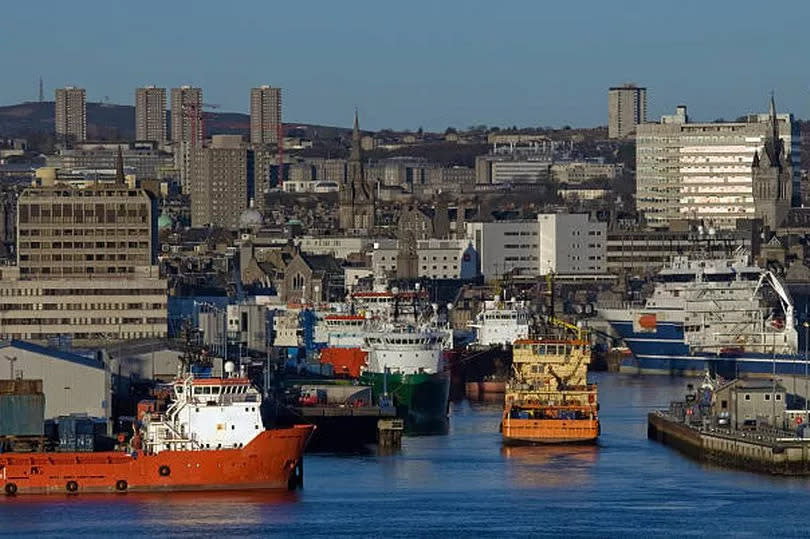General Election: Key questions answered for voters on Aberdeen South battleground

During the busy General Election campaign, voters have been left to ponder who they will vote for as the big day draws closer.
Residents in the north-east will be heading to the polls on July 4, and several of our constituencies have become a huge part of the conversation.
Seats to watch include Aberdeenshire North and Moray East where Douglas Ross has been surrounded by criticism after David Duguid was ousted, writes the Daily Record.
READ MORE: Aberdeen's Scotland Under-21 international Connor Barron agrees Rangers deal
READ MORE: Drivers 'exempt' from Low Emissions Zone charge slapped with £60 fines
Andrew Bowie's West Aberdeenshire and Kincardine seat has also come under the spotlight and looks to be a crucial battleground the SNP want to snatch from the Conservatives.
But Aberdeen South has dominated discussion, with the seat currently held by SNP Westminster leader Stephen Flynn, and all the questions voters will be asking have been answered.
Who’s running?
Stephen Flynn - SNP
John Wheeler - Conservatives
M. Tauqeer Malik - Labour
Jeff Goodhall - Liberal Democrats
Guy Ingerson - Scottish Greens
Michael Pearce - Reform UK
Graeme Craib - Scottish Family Party
Sophie Molly - Independent
Who won last time?
Stephen Flynn took this seat off the Tories for the SNP in 2019, increasing the Nationalists’ vote share by 13 per cent and winning a majority of nearly 4000.
At the previous two elections, it had flipped between the SNP and the Conservatives, with Tory Ross Thomson winning it in 2017 and Callum McCaig taking it for the Nats in their 2015 landslide.
Who are the contenders this time?
Flynn, now the SNP’s Westminster leader, is bidding to hold onto his seat in a tussle against former Scottish Tory councillor John Wheeler.
Aberdeen Labour leader M. Tauqeer Malik also feels the seat is within reach after some encouraging polls. From 1997 to 2010, Labour held the seat with Anne Begg. Back in those days, her main rival was the Lib Dems - although their support has fallen away since.
What swing do the Tories need to win?
The Conservatives would require a swing of 5.5 per cent to oust Flynn in Aberdeen South.
Labour came fourth in 2019 with just 8.4 per cent of the vote - behind the Lib Dems - so they would require a swing of far more epic proportions to win here.
What else is notable about this seat?
Although it’s seen some revisions of its boundaries down the years, Aberdeen South has survived as a Westminster constituency for nearly 140 years - since its first appearance in a general election in 1885.
In 1966, Labour won the seat for the first time - with their candidate a young Donald Dewar, who would go on to become Scotland’s inaugural first minister three decades later in 1999.
So what area does the constituency cover?
The seat covers much of the Granite City’s affluent west end including well-heeled suburbs like Rubislaw, Queen’s Cross and Broomhill.
It takes in a slice of the city centre around Aberdeen Harbour and extends south-east across the River Dee to cover Cove Bay and more deprived neighbourhoods like Torry and Kincorth.
What are the big issues here?
Once the fossil fuel capital of Europe, North Sea oil and gas remains an all-consuming issue in Aberdeen, where thousands of jobs and the local economy depend on it.
Inextricably linked to that is how the transition to clean energy is managed to protect jobs and keep Aberdeen at the forefront of the renewables revolution.
Anything else?
Time and time again, the state of Aberdeen city centre comes up with local voters who feel areas like the Granite Mile down Union Street have long been neglected.
Also controversial have been new policies creating “bus-gates” in the heart of the city - bus-only routes on busy streets - and the new Low Emission Zone.
What do I need on polling day?
If you’re going to a polling place to vote on July 4, you’ll need to bring along photo ID such as a passport or driving licence. You don’t need to bring the polling card sent in the post.
If you’re doing a postal vote, no photo ID is necessary. But if you haven’t yet registered to vote, unfortunately the deadline has now passed.

 Yahoo News
Yahoo News 
